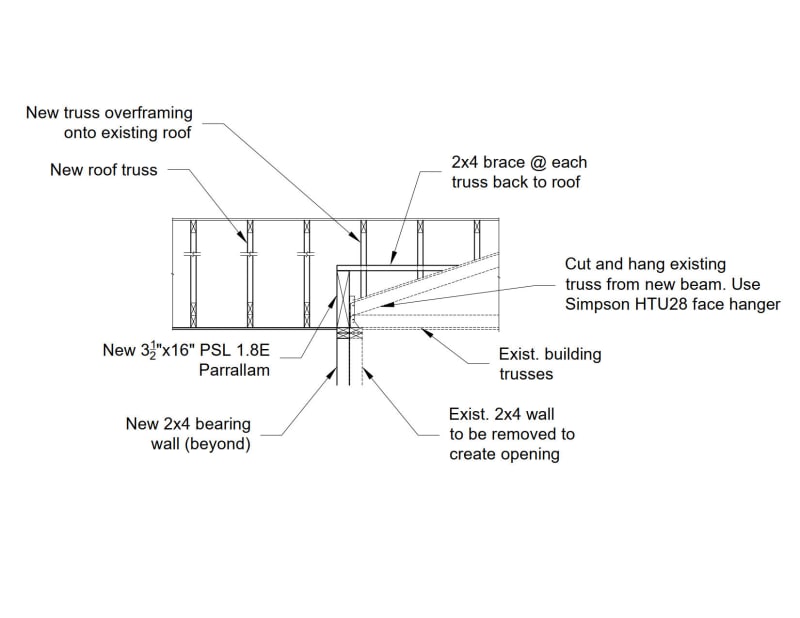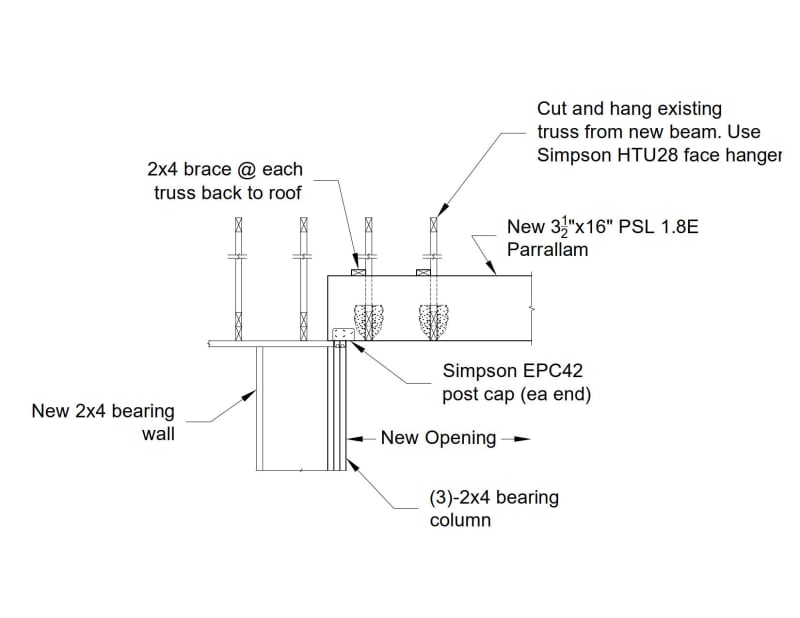JStructsteel
Structural
- Aug 22, 2002
- 1,352
See attached detail.
New building up against existing building, going to be opening up the wall and supporting the existing trusses from a new beam. Going to face hang them to maximize ceiling height. What do you think about the bracing of the new beam, it will be supported on a new 2x wall, but on top of the top plate. Was going to brace it back to the existing roof, that then is over-framed
Any issues you see?

New building up against existing building, going to be opening up the wall and supporting the existing trusses from a new beam. Going to face hang them to maximize ceiling height. What do you think about the bracing of the new beam, it will be supported on a new 2x wall, but on top of the top plate. Was going to brace it back to the existing roof, that then is over-framed
Any issues you see?



